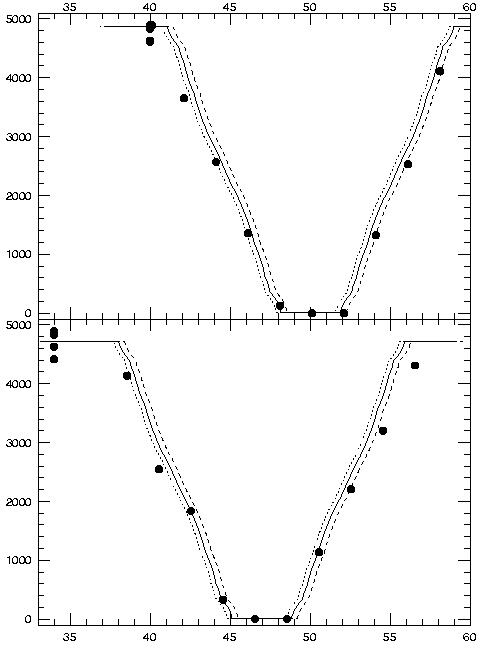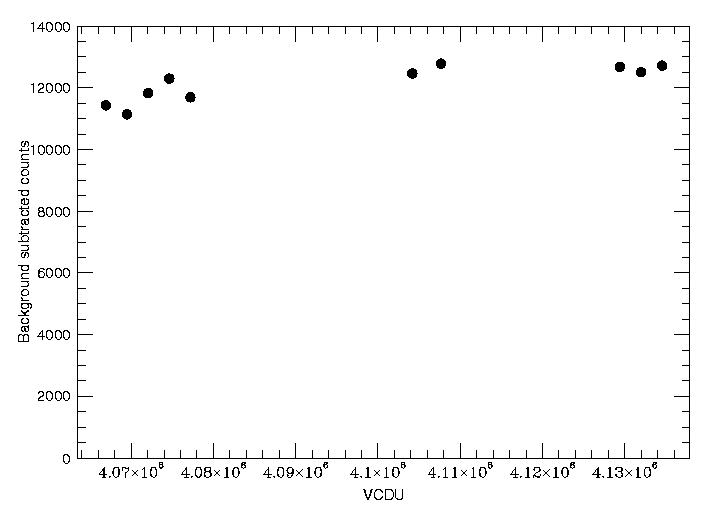

| HRC-I | HRC-S |
 |  |
For the I: we found that the fit significantly degraded with the inclusion of the data points at 77 and 79 degrees for the +Y fit, these points were excluded from the final solution. No such difficulties were found with the -Y data. The results of the fits indicate that the blades are 1.875 and 5.375 degrees closer to the center of the detector for the +Y and -Y respectively. This gives the blade positions to be 1076 and 1259 and 1020 and 1203 for the Leading/Trailing edges for the + and - shutters respectively.
For the S: The fits seem to indicate that the blade geometry is not the nominal. The solid line of the fits indicates the nominal blade vignetting profile. As you can see the data points for both + and - suggest that the blade is actually wider than nominal. Fitting only the front edge gives a good fit (the dotted line), while fitting only the back side (the dashed line) gives an equally good fit. After consultation with the IPI team, a "wider than nominal" blade was settled upon as being the most likely cause of the off nominal vignetting profile. To whit: the front edge of the blades is offset 2.125 and 5.1875 for the + and - blades respectively, while the back edges are only offset 1.4375 and 4.5 degrees closer to the center of the detector than nominal.
